
Map to this Exhibit – Foenix Retro Systems
VCF East – Spring 2022 – Wall, New Jersey USA
“You are here.”
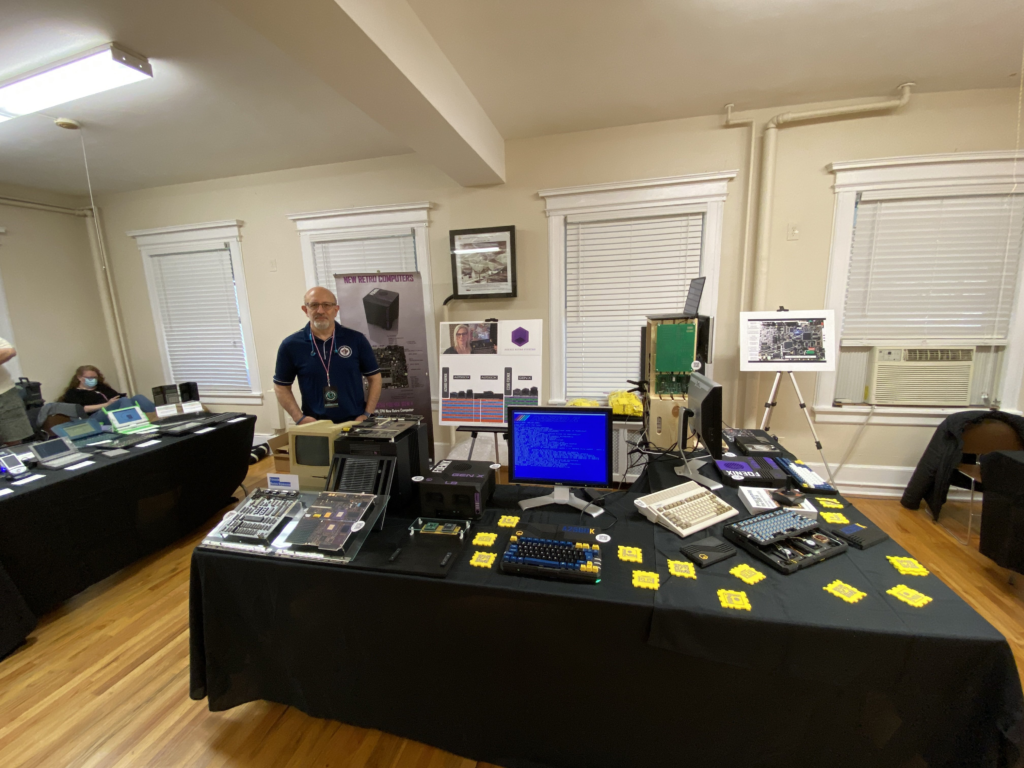
Whether or not you were able to join us in person at VCF East Spring this year, this page will offer a virtual tour of the Foenix exhibit. I will fill in pics during day 2, but the text is unlikely to change or be expanded upon (unless correcting inevitable typos)
Outside of the obvious purpose of being here (which is to display and demo Foenix products and software), this exhibit depicts a narrative of industry lineage starting with the release of low-cost processors beginning with the MOS 6502, and followed by 15 years of rapid and continuous innovation in both design and capabilities. Significant to the Foenix line is the development and adoption of the WDC 65816 CPU but also the Motorola 68000 family of processors.
We can only scratch the surface given limited space and time but the center of the brochure that may have brought you here details an unofficial and admittedly incomplete timeline that starts in 1975 and ends (roughly) at the beginning-of-the-end of the golden-age of computing (early 90s). Have a close look and you will recognize computers, gaming systems, and ICs that made significant contributions and have stood the test of time.
History aside, this exhibit is brought to you by Foenix Retro Systems and specifically, the imminent (and eminent) release of the Foenix GEN X, Stefany Allaire’s newest product. The GEN X is the ultimate combination of processor, graphics & audio capability, and connectivity, in one package; two members of the GEN X family are on display in addition to the recently released A2560K (integrated keyboard), plus a number of prior Foenix products (FMX, C256U+) that brought us to this juncture.
Have a scan of QR codes to goto a specific page. These QRs also appear on stickers attached to many of the items shown this year. If you are viewing this page after the fact or were unable to get to Wall, New Jersey for the April 22-24th event, click on the links below to reference the (mostly) full set of items on display.
( how to navigate? Unless jumping page-by-page via QR codes, this page is your top level and all content (12 links below) is flat, just one click away; You’ll need to use the old fashioned back-arrow in order to come back to this ‘map’. Several embedded features and ‘more info’ links will open new browser windows )
Missing from this virtual experience is:
- Corsham technologies Kim-1-clone – I challenge you to a game of “Farmer Brown”, but you’ll have to key in ~200 bytes of hexadecimal code first
- [my] Motorola 68HC11 single-board computer; this is the system I learned how to develop, wire-wrap and build onto when I was in my college ‘years’, 30 yrs ago. I have some code on thermal paper to prove it!
- A C4B (GA) C256 Foenix FMX in the original 3D printed case, on loaner from ‘Andy’
- Continuous loop viewing of Foenix software loaded into a YouTube playlist
- Arcade action – a few of the current greatest hits of Foenix games available for the Foenix C256U+ (these titles will run on the GEN X)
But here is a quick tour of what can be shared:
0: [This page]

1: Apple II – The beginning for many, we have a reproduction Apple II PCB in shadow-box, honoring the REV 0 version of the original board with some callouts to significant developments and ground-zero innovation. Of course, some of us began with the Commodore lineage or the BBC Micro, but the premise is that at some point, all of these systems were new and shipping for the first time; the advent of inexpensive CPUs made this possible.

2: Apple Macintosh – in 1984, Apple released the machine that would ‘change everything’. A field trip that Steve Jobs took to Xerox PARC can be thanked for technology that found its way into the hands of many; Job’s own background and interests are also in there, along with his enthusiasm and maybe a bit of obsessive or compulsive behavior. The Macintosh was an early use of the Motorola 68000 CPU and our display contains the original M0001 four-layer circuit board mounted alongside another famous motherboard; but in this case, it is complete with the 64 pin dip-based CPU that dominates the board (as it should).
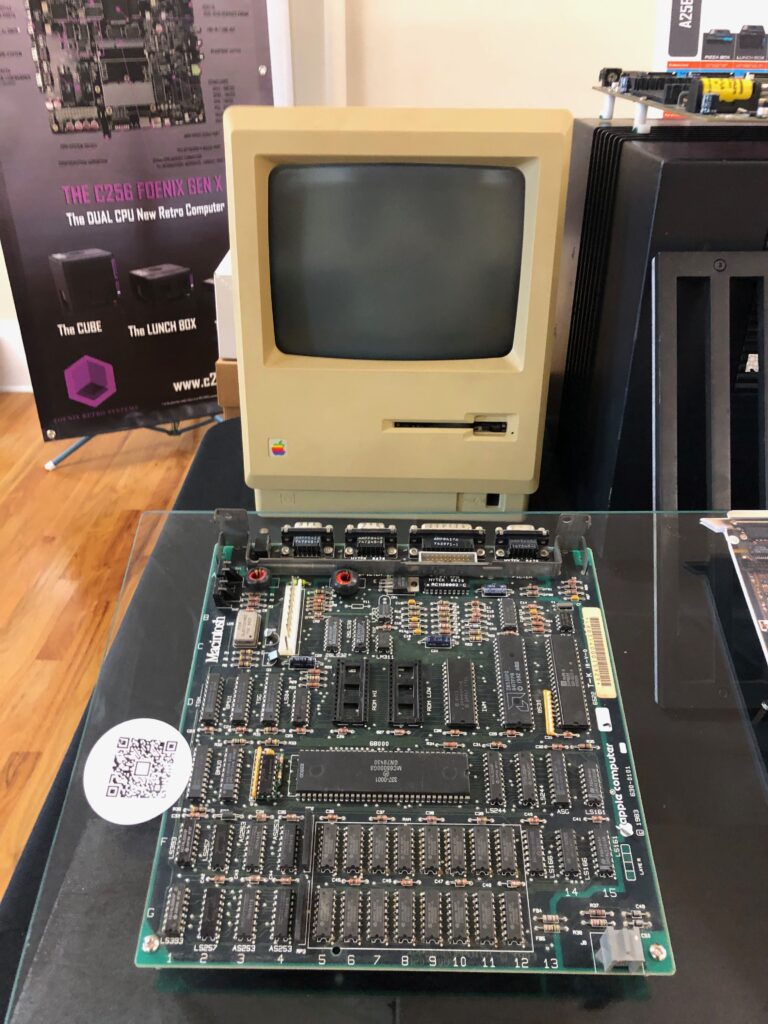
3: NeXT – An original NeXT cube and an original circuit board of a ‘slab’ NeXTstation is here and right beside the original Macintosh. In just 4 years, with a break between, Steve Jobs was able gather a high-performance and highly technical team to drive innovation that in some regard, is still relevant today.
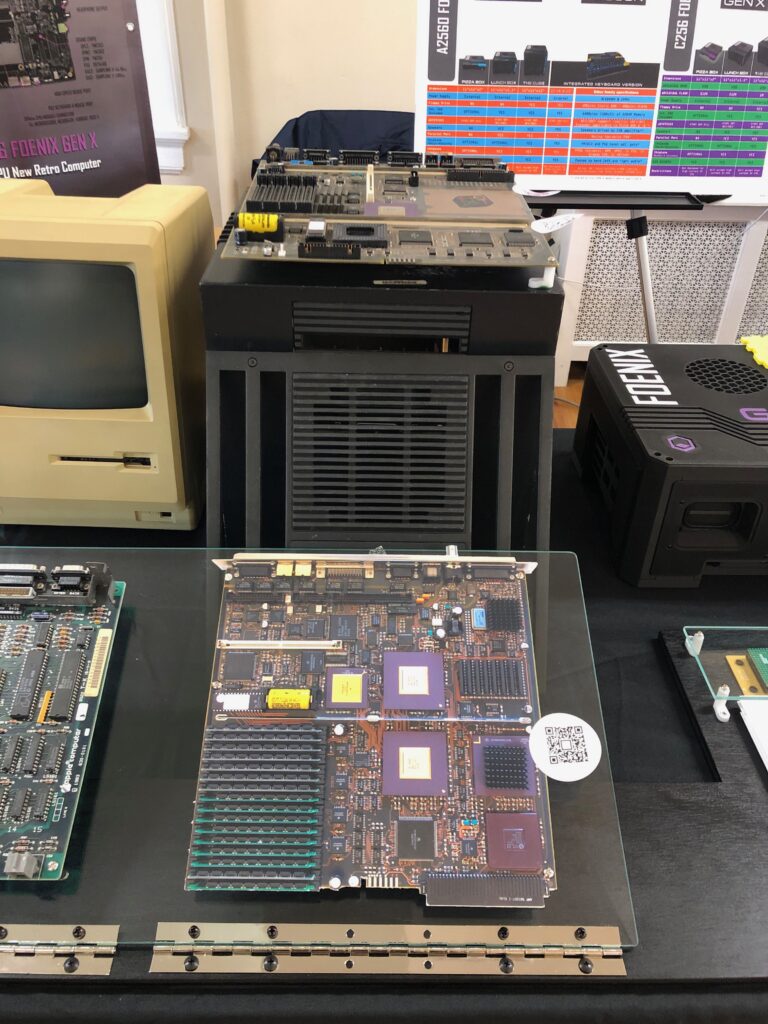
4: Foenix C256 GEN X – The ‘Lunch Box’ version of the GEN X is here. This is a fully working early prototype and has a Motorola 68040v onboard in addition to the board mounted WDC 65816. At the far-end of the exhibit is the GEN X ‘Pizza Box’ in its slim and streamlined enclosure. Don’t forget to register for the raffle !!


5: VIC 20 (case) – an exhibit within the exhibit, this is one of four machines used to highlight the evolution of computer cases and this particular case is the original bread-bin that Commodore leveraged across many machines. Unfortunately, due to space constraints, we were unable to display this unit this year but click above for a read and some fun facts.
6: Plus/4 (case) – Commodore’s Plus/4 is a strange duck. A victim of circumstance and to some, the beginning of the end of Commodore itself, the case was a departure from the beige color and 70s feel and introduced more compactness, a dark charcoal color, and a number of peculiarities. As above, the Plus/4 was not able to make the trip due to space constraints but read about it as you follow along at home.
7: Amiga A600 (case) – The Amiga A600 is here on display, or at least the case is (it’s empty). Per Stefany, the shape and size of this machine weighed heavily on her design of the A2560K, integrated keyboard model. These are placed side-by-side for comparison.

8. Foenix A2560K (case) – In addition to the A2560K working model #000, we have a 2nd ‘K’ case in ‘exploded’ form. Marvel at the intricate design employed to piece together the solid build of this member of the A2560 family.

9: Foenix A2560K – This is Stefany’s personal computer and it arrived in New Jersey just a few days prior to the show. The A2560K is, in my opinion, the flagship of the Foenix line and is destined to be a future classic.

10: C256 Foenix FMX – The Foenix Music eXtension is where Foenix started; this was Stefany’s first shipping product.
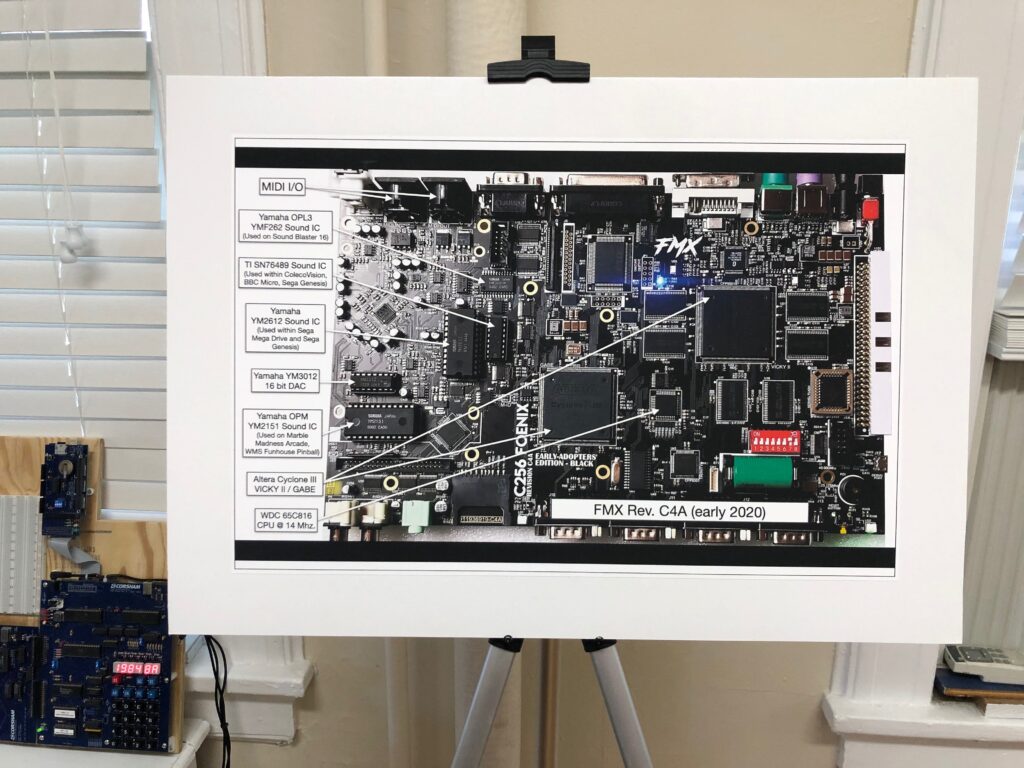
11: Foenix C256U+ – The follow-up to the FMX, the “U” is a low cost or ‘user’ edition. The basic design was borrowed from to create the A2560 product, driven by a Motorola 68SEC000 running at 20 MHz. (versus the WDC 65816 running at 14 MHz leveraged by this C256U+).
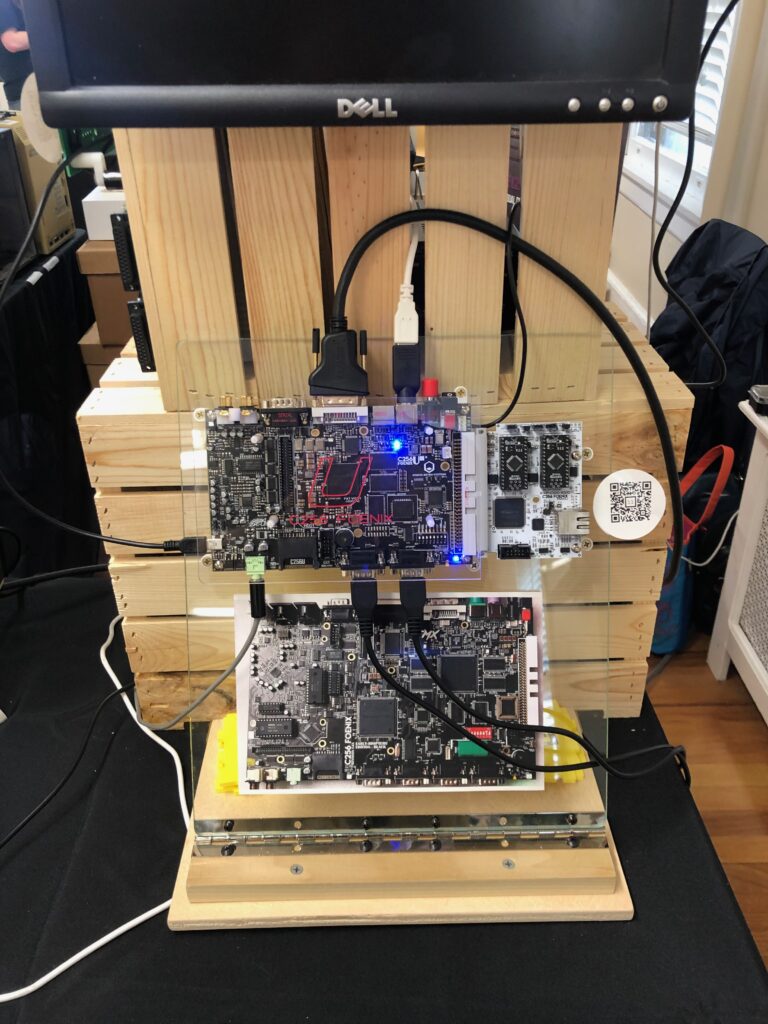
12: MOS-KIM-1 – The ‘machine’ that started it all. Created by MOS following the 6502 release, it was intended for engineers but became popular among hobbyists.

The KIM 1 is the ‘end’ (of our exhibit) but it is where this all started. It is to be thanked for leading Commodore to develop what became the best selling home computer of its day and the reason why many of us are here.
The upper-right QR code of the brochure that brought you here will take you to Foenix’s official web site, the lower-left is a Discord invite, and the lower-right is an entry for the GEN X PB raffle, which will be drawn on May 20th in a live event.
Thank you for your interest.
Michael (EMwhite) – curator
(contact me by clicking on the footer on any page)